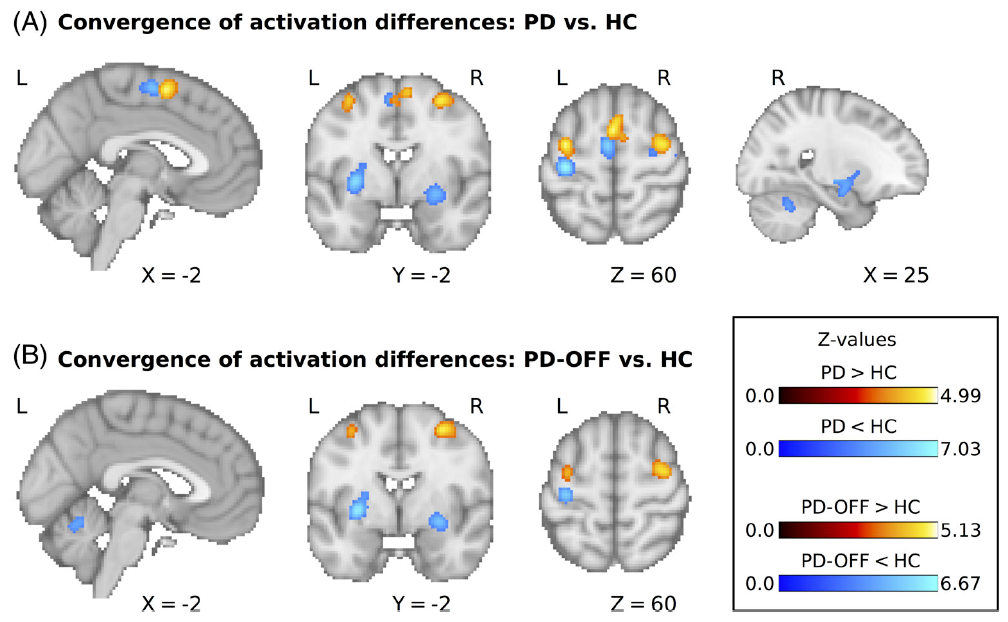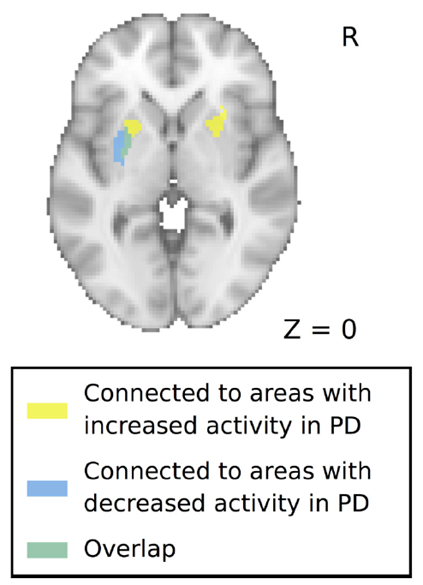This is work by the Movement Disorders group at DRCMR and the Institute of Neuroscience and Medicine, Brain & Behaviour (INM‐7), Juelich, Germany with Damian Herz, David Meder, Julia Camilleri, Simon Eickhoff and Hartwig Siebner.
We used a quantitative meta-analysis (activation likelihood estimation) to extend our findings from seven years ago (doi 10.1002/hbm.22397) based on the research published since then. We investigated brain activity during motor tasks in PD compared to healthy controls. We again find a consistent hypoactivation of putamen (as in our previous study, but now bilaterally) and in the cerebellum. We additionally find a previously unreported pattern of underactivation in primary motor cortex and SMA, together with overactivation of the regions directly anterior (precentral gyrus and preSMA).

5/n
Since dopaminergic denervation of putamen in PD shows a caudal-to-rostral gradient, we wondered whether these hypoactive areas might be connected to the posterior putamen, while the hyperactive areas might be connected to the anterior putamen. This was indeed the case.

This pattern of overactivation in anterior regions might reflect a compensatory process where PD patients rely more on “cognitive” or “goal-directed” behavior due to the impairment of the primary motor network involved in more “automatic” motor behavior.
All data and code are available online to facilitate future replications and extensions (anima.inm7.de). Thanks for funding goes out to the Danish Council for Independent Research, NovoNordisk Foundation, National Institute of Mental Health, Helmholtz Foundation, EU Horizon 2020 and Lundbeck Foundation.
You can read the article in Movement Disorders by clicking HERE.



